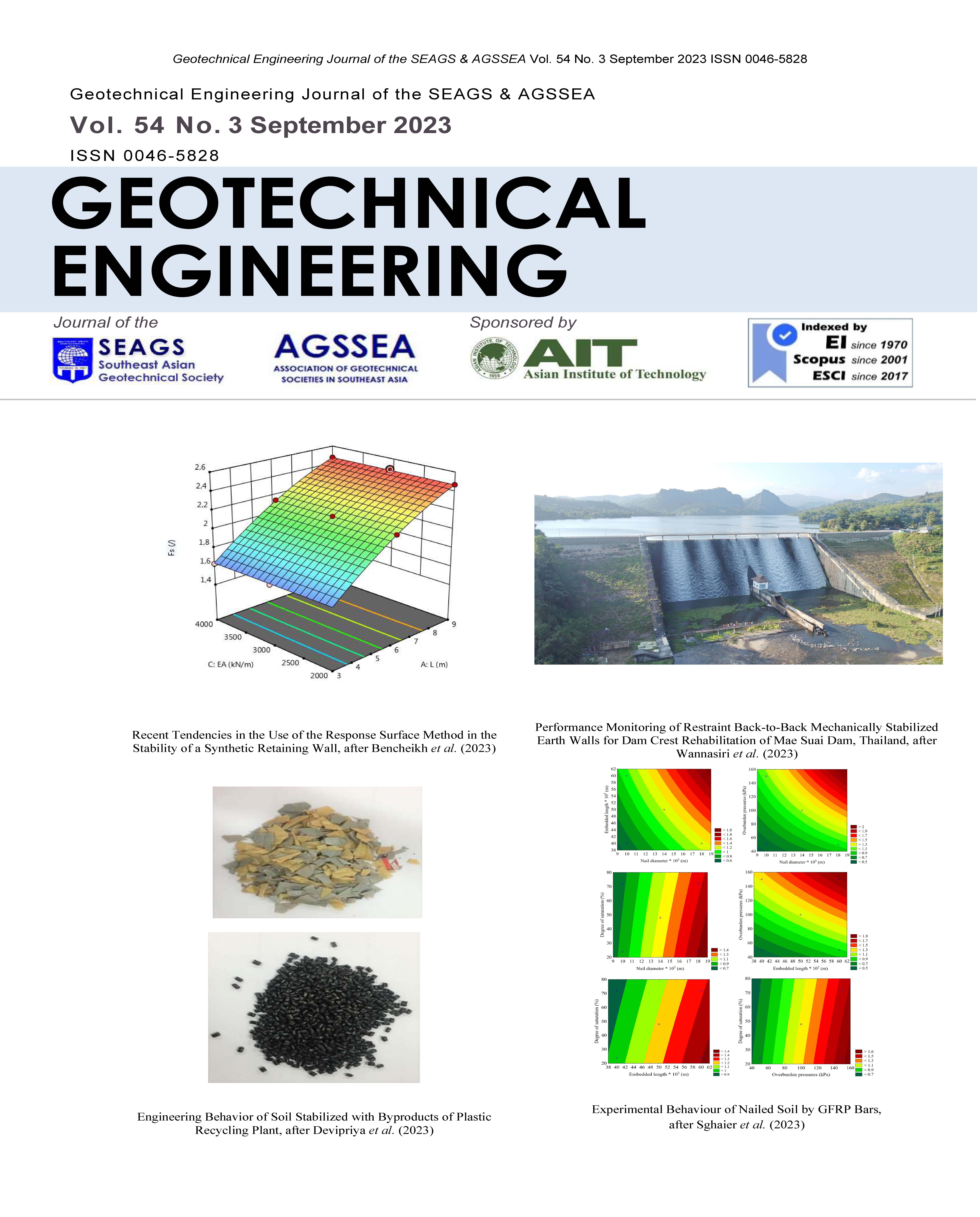Recent Tendencies in the Use of the Response Surface Method in the Stability of a Synthetic Retaining Wall
Main Article Content
Abstract
Geogrids, a type of geosynthetic material composed of polymers, have found extensive use in transportation, infrastructure, and structural projects. They are commonly employed for soil stabilization purposes, ranging from reinforcing walls to strengthening subgrade soils or embankments. There is also a growing potential for geogrids to be utilized in remote sensing applications. To predict the horizontal displacement (Ux) and safety factor (Fs) of a synthetic retaining wall, finite element software is utilized for studying the impact of soil properties and reinforcement parameters, the vertical spacing between reinforcements (Sv), their length (L), and their normal stiffness (EA). The extent of influence from various factors is assessed through a grey relational grade analysis. Subsequently, the input layer parameters for the response surface methodology (RSM) of the central composite design (CCD) type are determined based on the outcomes of the grey relational grade analysis. The horizontal displacement and safety factor are predicted using numerical simulation with Plaxis 2D results.This paper presents a study of a synthetic retaining wall using an composite central type fractional digital experiment plan. The functional relationship between the output variables (horizontal displacement and safety factor) and the input variables (L, Sv, EA) was expressed with determination coefficients (R2 = 99.63% for Ux and R2 = 99.95% for Fs). These coefficients represent the ratio between the variation due to the model and the total variation. This high level of determination indicates that the model is well-fitted for both responses, confirming its adequacy. Therefore, central composite design models can be adopted to solve geotechnical problems, especially those related to synthetic retaining walls, which possess a highly complex and nonlinear structure.
Article Details

This work is licensed under a Creative Commons Attribution-NonCommercial-NoDerivatives 4.0 International License.
Copyright © 2019 Association of Geotechnical Societies in Southeast Asia (AGSSEA) - Southeast Asian Geotechnical Society (SEAGS).


